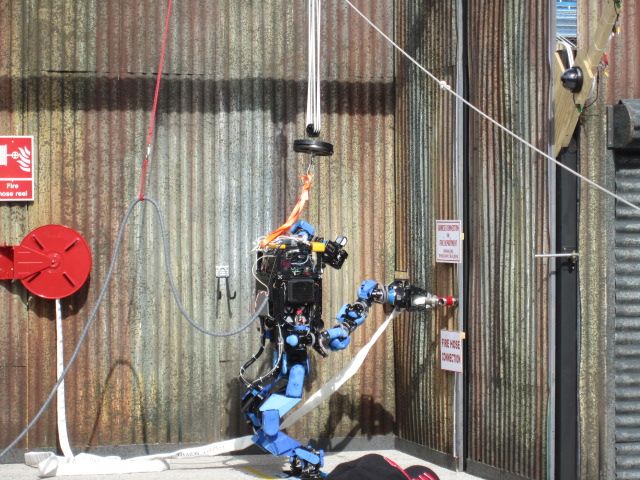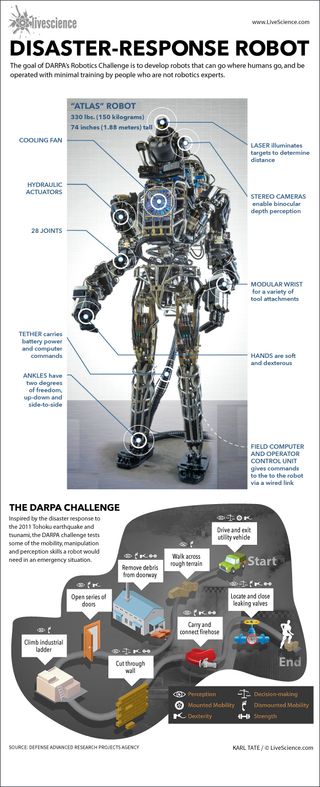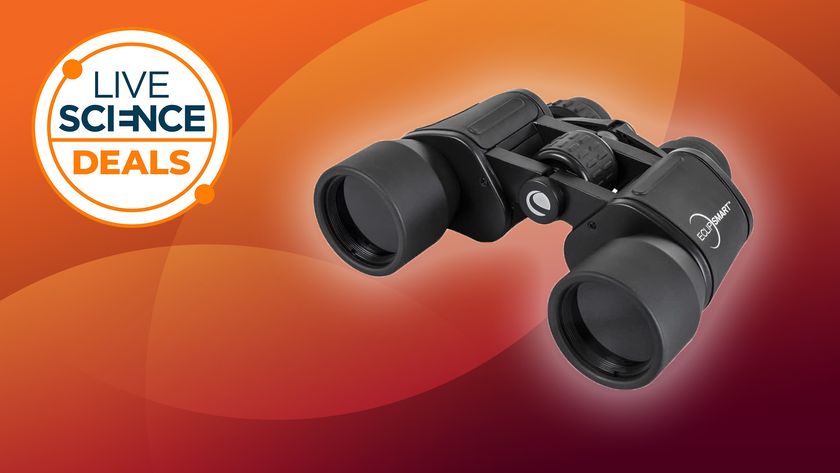Robot Olympics: Japan's Schaft Takes Lead in 2-Day Competition

HOMESTEAD, Fla. — After one full day of competition, a two-legged, 209-pound (95 kilograms) blue robot sits atop the leaderboard here at the DARPA Robotics Challenge Trials.
The world-class robotics competition features 17 teams from five different countries attempting to demonstrate some of the most advanced disaster-response capabilities in the field of robotics. DARPA, the agency within the U.S. Department of Defense responsible for developing new technologies for the military, designed the contest as a way to foster the development of new robots that could one day work with humans to secure disaster sites in the aftermath of a natural or man-made catastrophe.
The two-day event is being held at the Homestead Miami Speedway. The scored competition is based on the teams' performance in eight challenging tasksthat test the robots' mobility, perception, strength and dexterity. [WATCH LIVE: DARPA Robotics Challenge]
The tasks include driving a vehicle through a marked course; removing debris from a doorway; navigating over rubble and uneven terrain; climbing an industrial ladder; retrieving and connecting a hose; opening three different types of doors; using tools to cut through drywall; and closing a series of valves to demonstrate dexterity.

After the first day of competition, a two-legged robot built by Schaft Inc., a Japanese robotics company, is currently in the lead with 18 points. A humanoid robot operated by engineers at MIT is currently in second place with 12 points. Saturday (Dec. 21), the robots will battle through another round of challenges before a winner is crowned. [Images: Meet the DARPA Robotics Challengers]
"DARPA is really, really happy with this great first day," Brad Tousley, director of DARPA's Tactical Technology Office, told reporters in a news briefing Friday evening. "The motivation, enthusiasm, professionalism and the work that all the teams put in — I think they did an awesome job."
The day's events not only showcased advanced robotic technology, but also the creativity and ingenuity of their human operators. In one case, the DRC-Hubo robot, built by engineers at Drexel University in Philadelphia, nearly made it to the top of a ladder by having the robot ascend backwards.
Sign up for the Live Science daily newsletter now
Get the world’s most fascinating discoveries delivered straight to your inbox.
To evaluate the robots' ability to perceive its environment during the tasks, the human engineers that control the movements of the machines are forced to operate "blindly" inside the Speedway's garages, where the teams have each set up their headquarters. As such, these controllers can only "see" what the robot detects with its cameras and sensors.
Still, the technologies on display in the Robotics Challenge are in the early stages of their development, and the robots move very slowly as they approach each task.
"To do disaster-response tasks requires robots that can operate in an environment that has been designed by human beings," DARPA director Arati Prabhakar told LiveScience. "Things that are very simple for us — getting into a vehicle, opening a door and walking through it, or just moving through an obstacle course — for robots, these are incredibly complex tasks."
Through its incentive-based challenges, DARPA is hoping to speed up the pace of development in the field.
"When we started down this path, we knew there was a lot of great research brewing," Prabhakar said. "But, the purpose of the Challenge is to put a task out in front of these teams that really requires them to pull all those pieces together and actually build a robotic capability that can execute the task. It's a wonderful forcing function to get beyond just tuning the individual pieces of the technology. This is a great example of exactly where Challenges can be very, very helpful."
Originally, 17 teams were scheduled to compete at the Robotics Challenge Trials, but a group from China, called Intelligent Pioneer, encountered travel issues that prevented them from arriving in Florida in time for the competition, according to DARPA officials. Intelligent Pioneer was one of four teams that entered the trials with robots that had been built entirely with their own funds, without any support from DARPA.
This week's trials will help determine which teams move on to the DARPA Robotics Finals, which will be held roughly 12 to 18 months from now, Tousley said. In that final stage of the competition, teams will compete for a $2 million grand prize.
Follow Denise Chow on Twitter @denisechow. Follow LiveScience @livescience, Facebook & Google+. Original article on LiveScience.

Denise Chow was the assistant managing editor at Live Science before moving to NBC News as a science reporter, where she focuses on general science and climate change. Before joining the Live Science team in 2013, she spent two years as a staff writer for Space.com, writing about rocket launches and covering NASA's final three space shuttle missions. A Canadian transplant, Denise has a bachelor's degree from the University of Toronto, and a master's degree in journalism from New York University.











